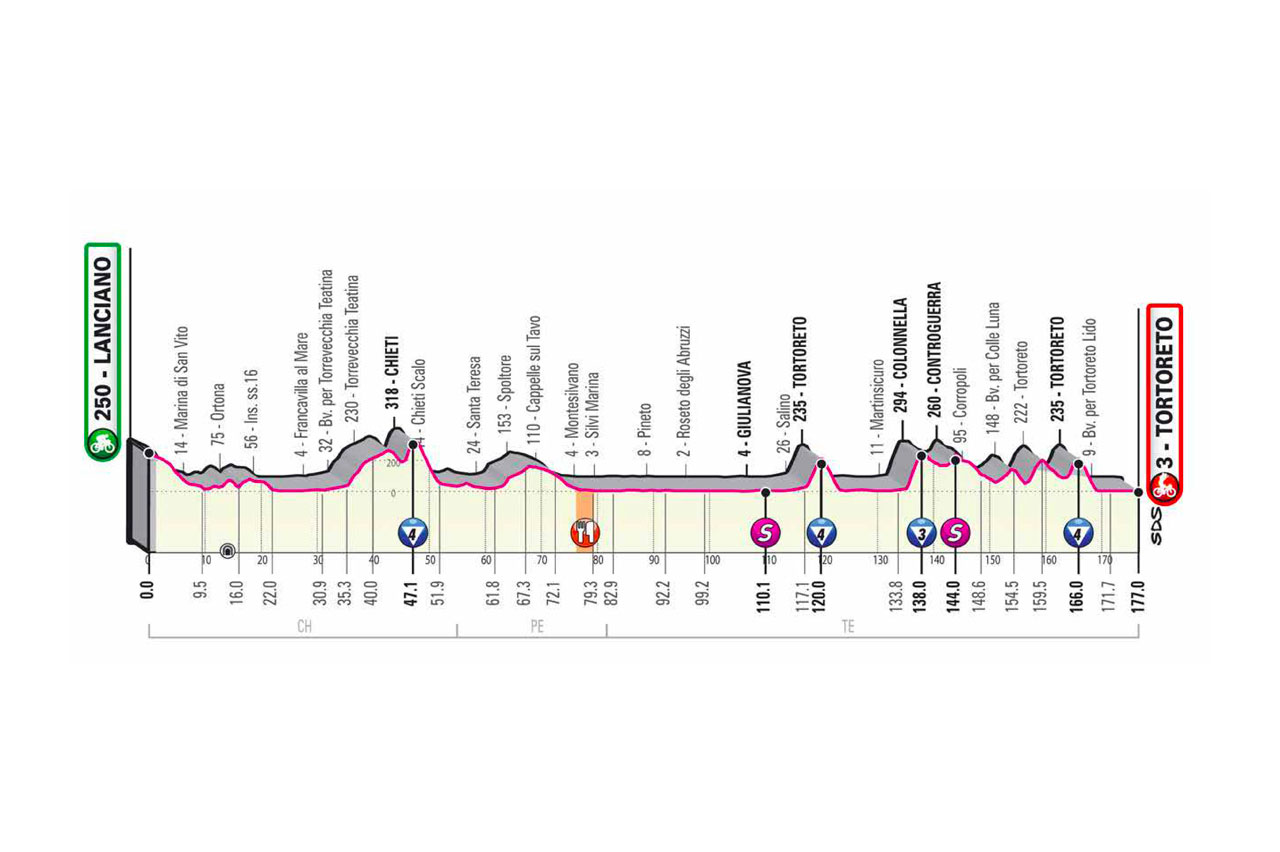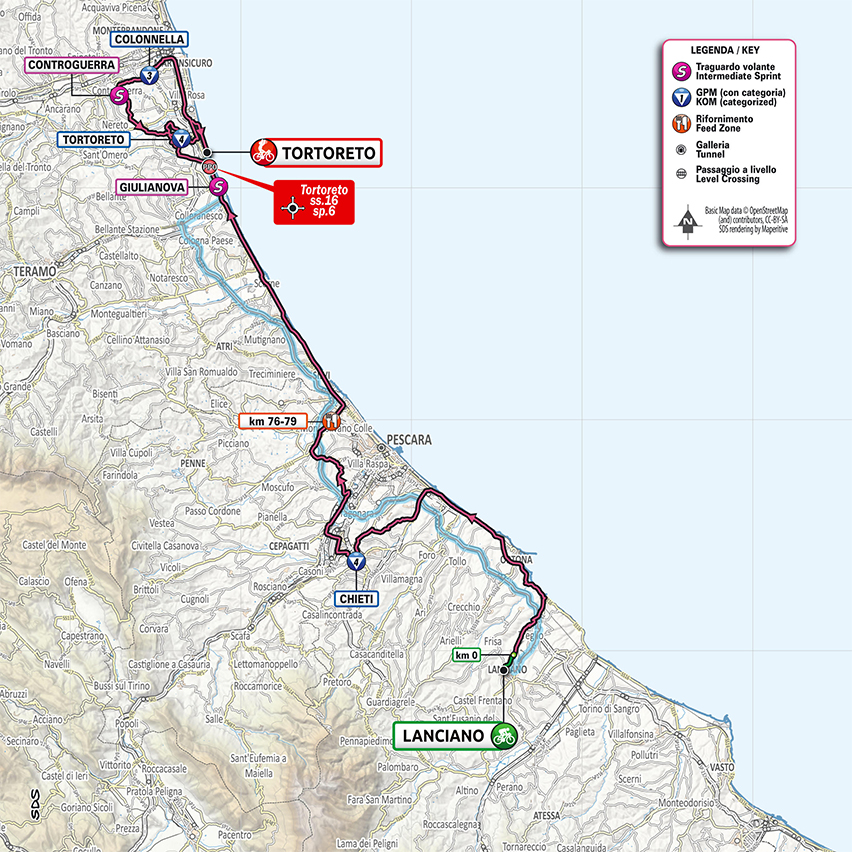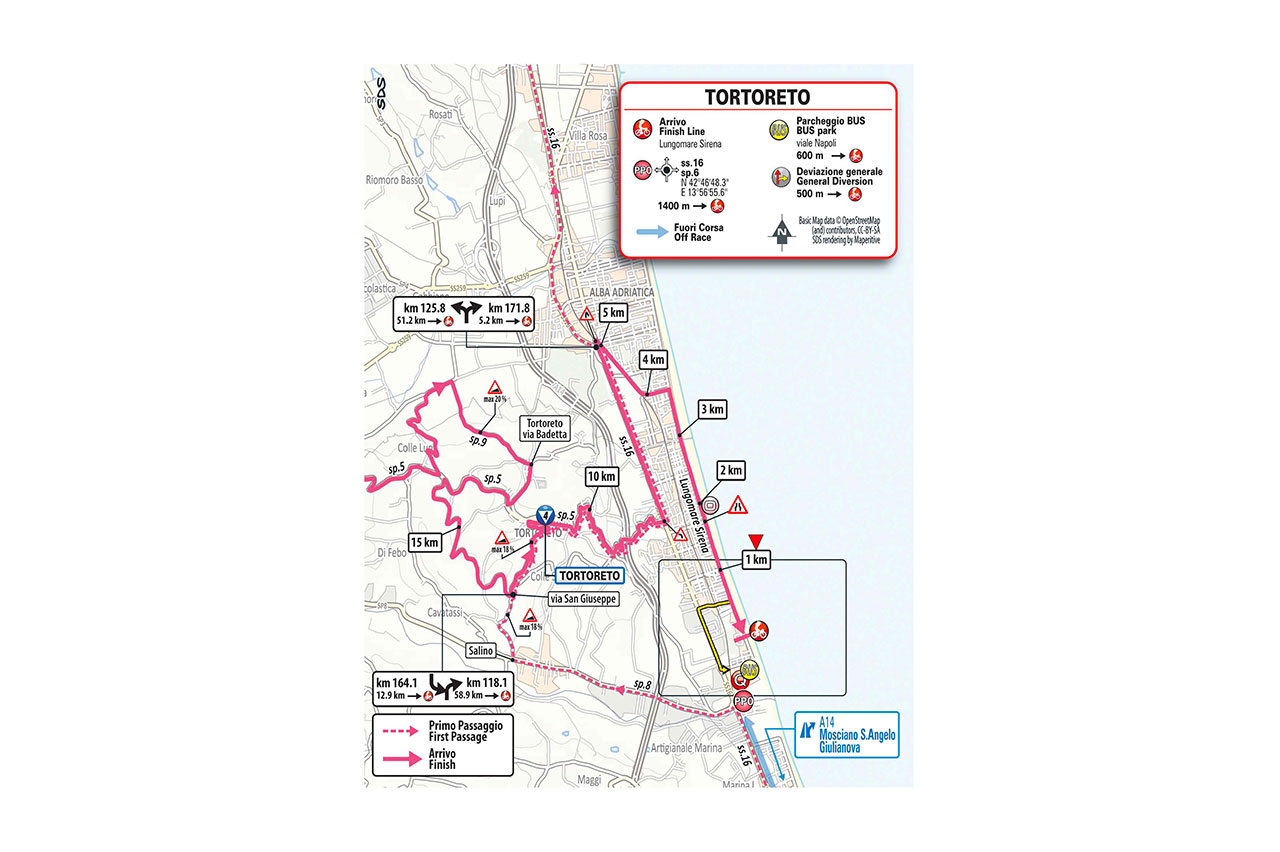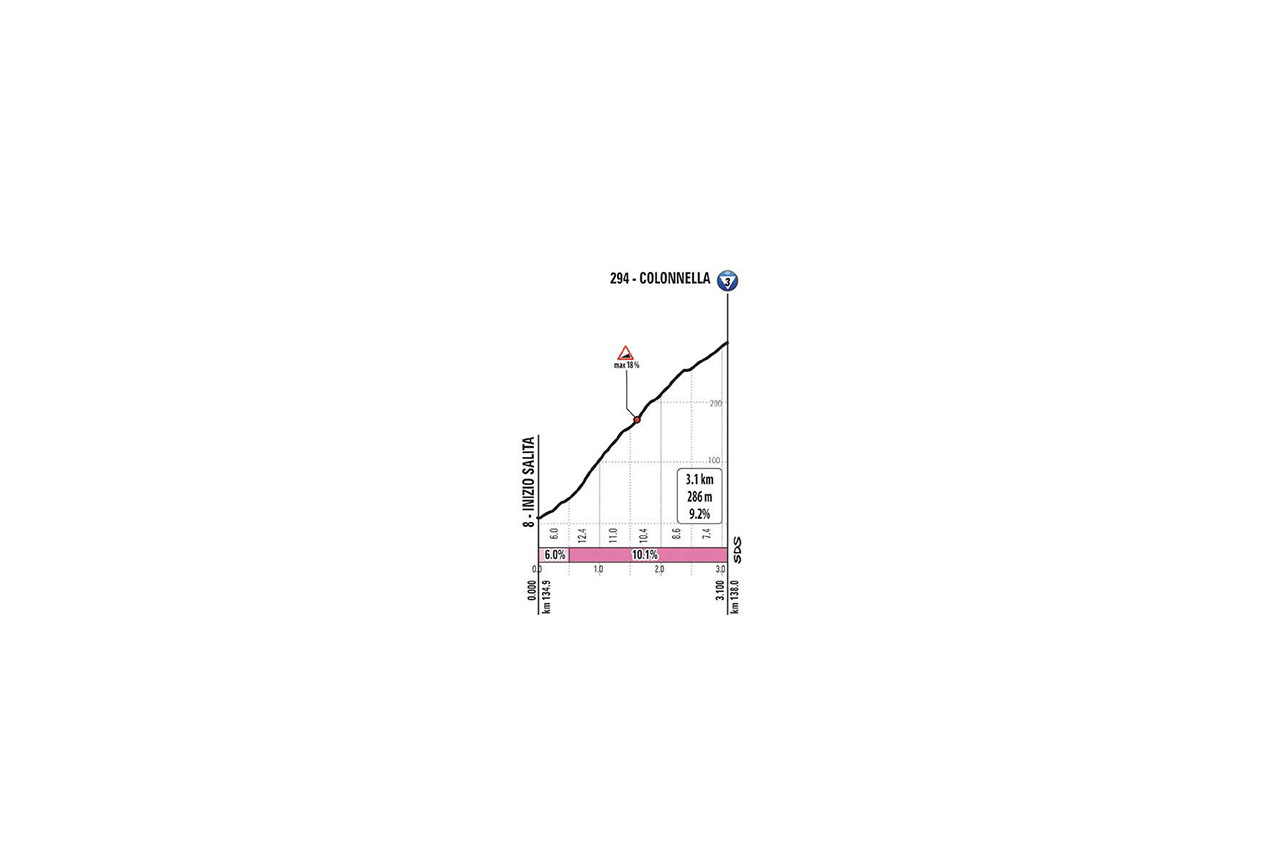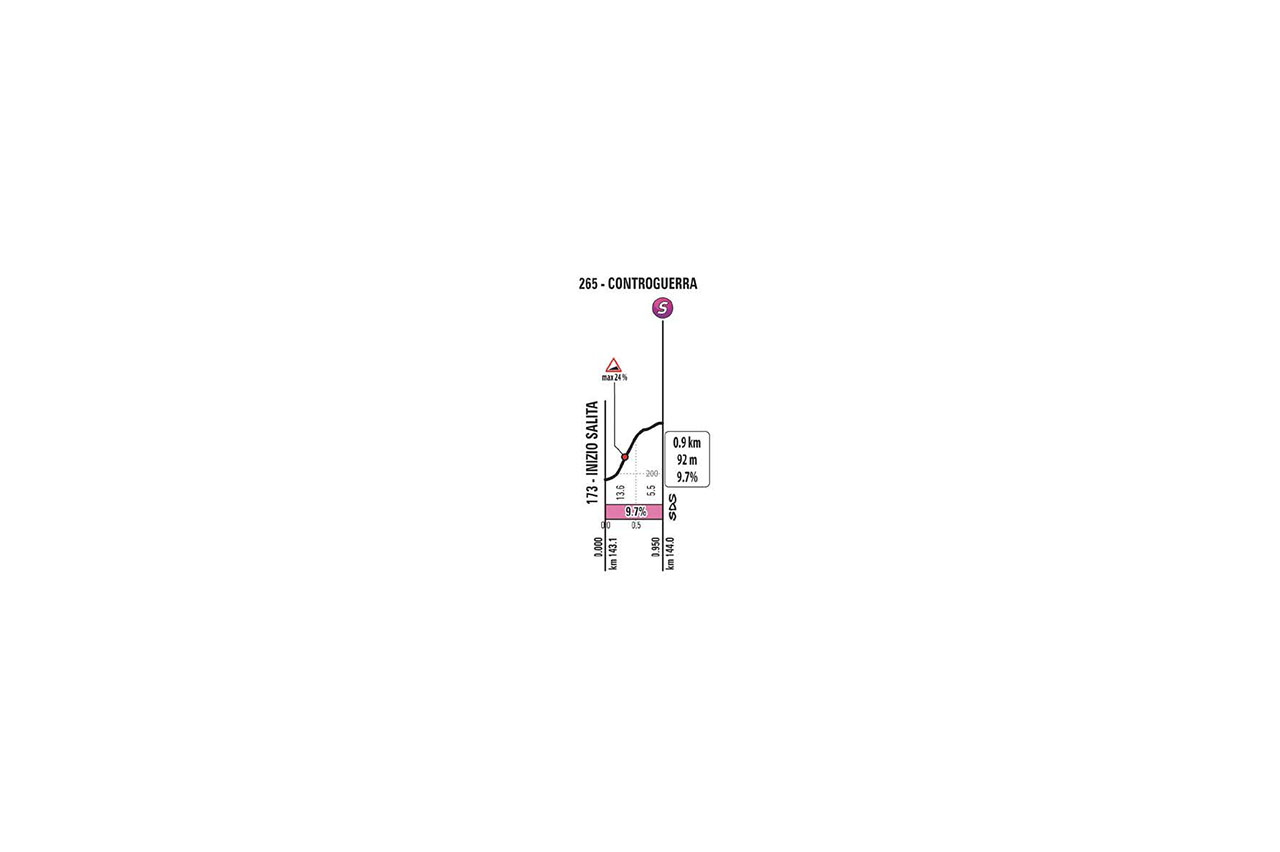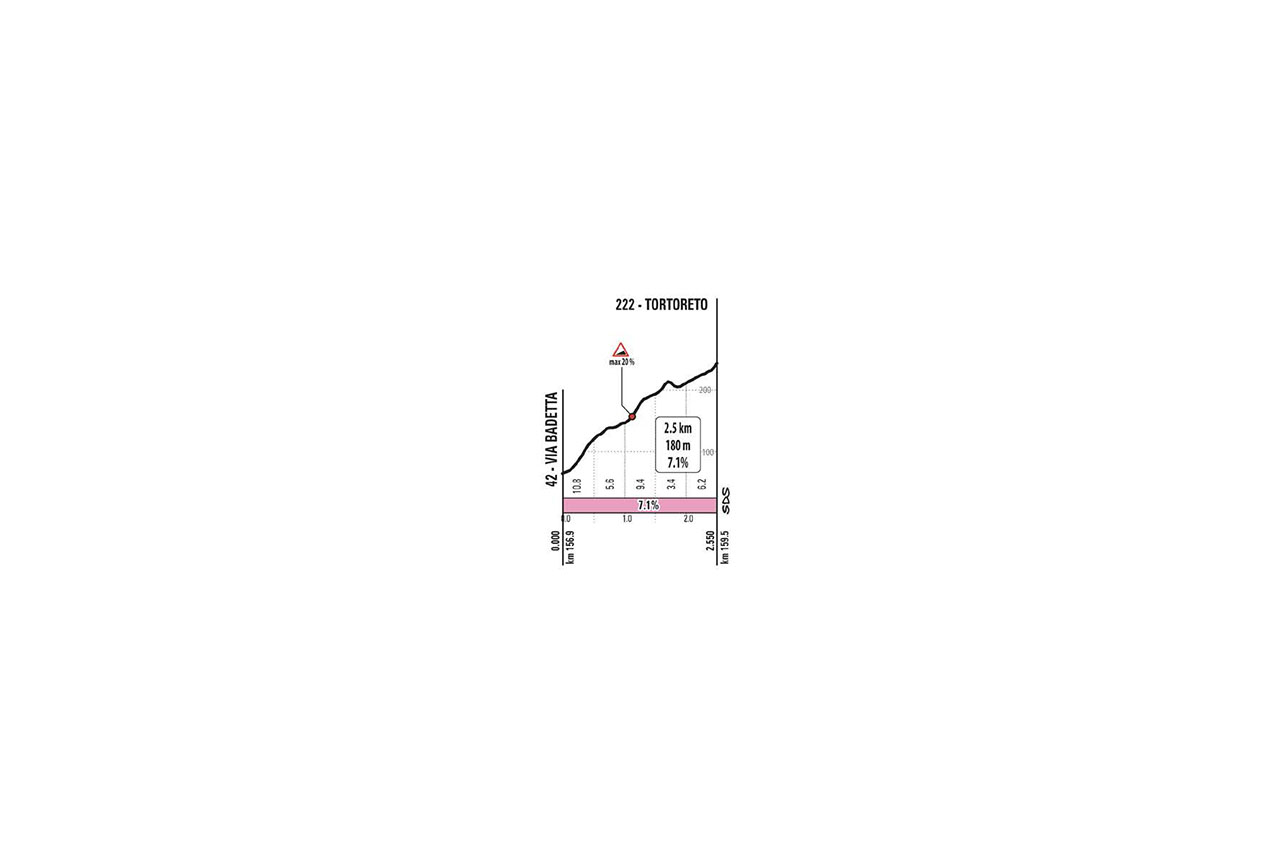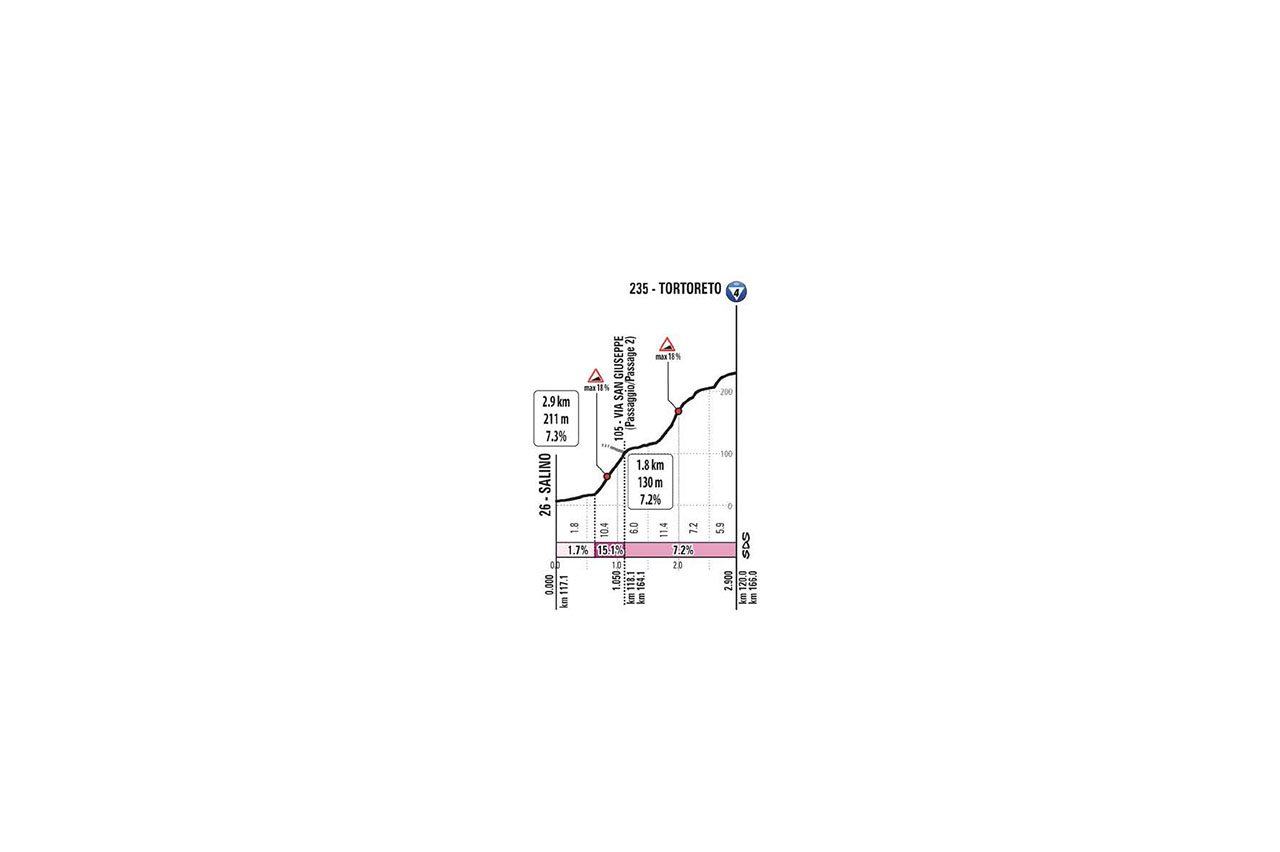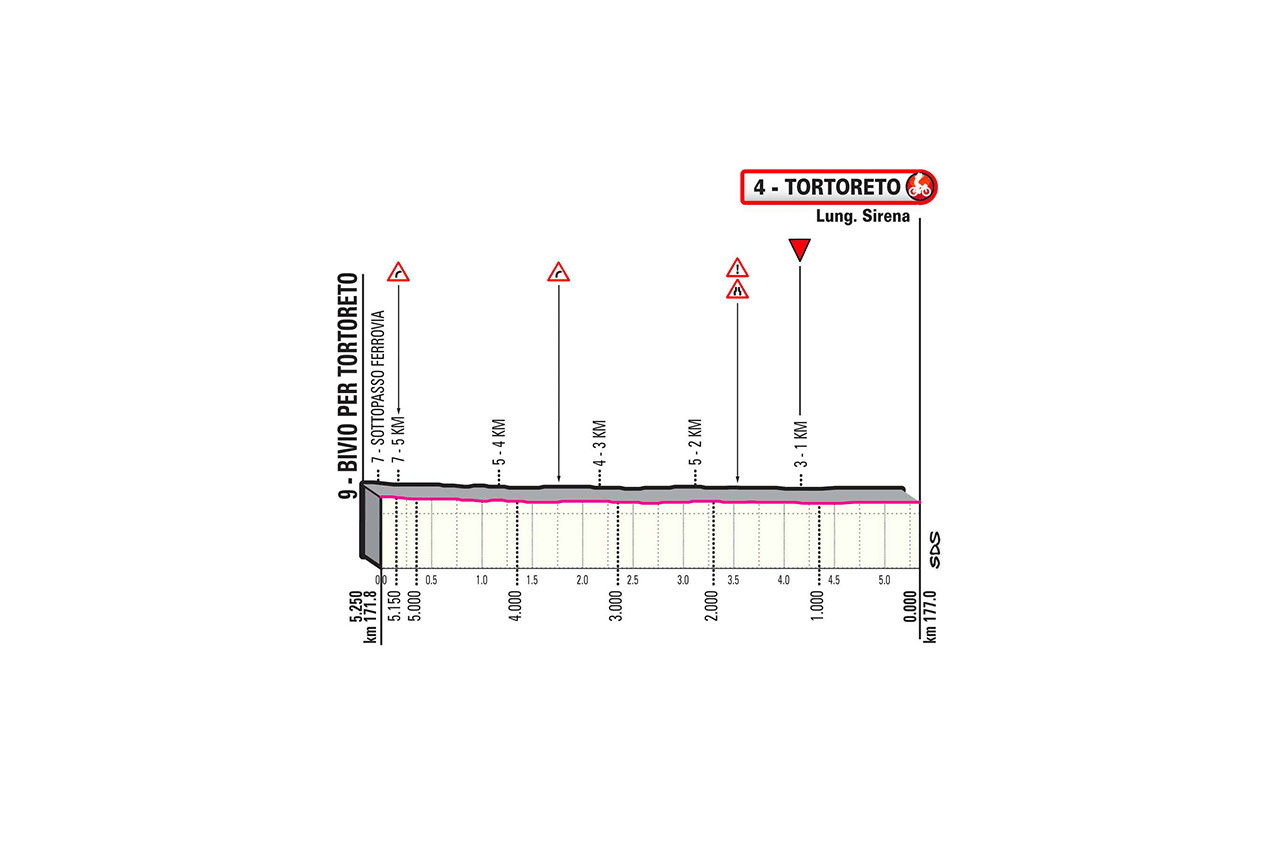profile
map
technical info
The Route
The stage course is varied, with a rough “wall climbing” finale. In the first part, up to Francavilla al Mare, the route follows the Adriatic coast. More intricate sectors are found when crossing urban areas. The course then heads inland, towards Chieti, and takes in a succession of climbs culminating in the Muro del Tricalle (with gradients topping out at 18%). The route goes back onto the coast until Giulianova, and after a few kilometres it enters the “closing circuit” – a succession of punchy climbs of nearly 40 km. The route takes a first pass through Tortoreto (upper town), descends onto the ss. 16, reaches Martinsicuro and then tackles two consecutive harsh climbs: Colonnella (10% avg. and 18% max. gradient) and Controguerra (24%). The course climbs back up to Tortoreto along a different side (max. slope: 20%), and then repeats the first ascent (max. slope: 18%), clearing the summit approx. 10 km from the finish.
Final kilometres
The final 10 km descend at first, then the route levels out and straightens over the last 7 km. There is one sharp bend 5 km before the finish, after a railway underpass, and one last right-hander with 3,500 m to go, leading into the long home straight. The roadway narrows owing to a roundabout with 1,700 m to go. The finish line sits on 8 m wide tarmac.
start / finish
climb detail
final kilometres
itinerary timetable
tourist info
Host city:
Lanciano
Panoramica
Lanciano, the ancient capital of the Frentani, is a destination for pilgrimages from all over the world for the Eucharistic Miracle. A monk in the eighth century had a doubt during the celebration of the mass, the host and the wine turned into flesh and blood that are still visible today in the Church of San Francesco. Anxanum, ancient name of Lanciano city of arts and crafts, in the Middle Ages was the center of commercial exchanges with the East for the nundinae, fairs of European importance. Located on a hill between the Costa dei Trabocchi and the Majella, it is the reference city of the Frentano area and of the largest metal-industrial industrial area in the center and south, the Val di Sangro. Among the monuments stand out the Church of Santa Maria Maggiore, the Cathedral Madonna del Ponte, the Fonte Grande of Civitanova and the Montanare Towers, whose complex houses the Park of Musical Arts in honor of the centuries-old traditional musical of Lanciano that gave birth to composers Fenaroli and Masciangelo and who for 50 years has hosted the famous musical summer courses for symphony orchestra.
Gastronomia
- Pallotte cac e ov (cheese and egg pallotte)
- Rintrocilo (fresh pasta)
- Cif and ciaf lamb
- Pizz and foje
- Bocconotto (typical dessert)
Bevande
- Montepulciano d’Abruzzo (red wine)
- Cerasuolo (rosè wine)
- Trebbiano e Pecorino (white wines)
- Legonziano (sparkling wine)
Punti d'interesse
- Sanctuary of the Eucharistic Miracle
- Church of Santa Maria Maggiore
- Underground archaeological path of the Diocletian
- Basilica Madonna del Ponte
- War memorial, Piazza Plebiscito
- Fonte del Borgo
- Diocesan Museum, Largo dell’Appello
- Federico Spoltore House Museum, Via Spoltore
- Monument to the Ottobrini Martyrs, Largo Martiri Lancianesi
- Montanare towers, via Silvio Spaventa
- Porta San Biagio
- Diocletian bridge
- Carabba Publishing House
- Monument to the Samudaripen, Memories Park
- Church of Sant’Agostino
- Tower of San Giovanni
Tortoreto
Overview
Thanks to its more than 600.000 overnight stays a year, Tortoreto can be considered the main seaside tourist destination in Abruzzo. Overlooking the Adriatic Sea, Tortoreto can be divided into 5 zones: the historical centre, the Old Town, on a hill; the seaside or Lido and three hamlets: Salino, Cavatassi and Terrabianca. The historical centre, of medieval origin, houses churches with remarkable works of art and monuments of absolute value. From the Old Town, people can enjoy a wonderful view that goes from the coast to the Gran Sasso, the highest mountain of the Appenines. The “Lido” has much to offer for an unforgettable seaside holiday. Surrounded in the greenery, it can boast an amazing cycle path, beautiful bathing structures, well equipped areas, outdoor activities restaurants and hotels ready to welcome thousands of tourists every summer. Its thriving tourist vocation is certified by a great number of “flags” every year”: the EUROPEAN BLUE FLAG awarded 24 times, 23 times consecutively. The GREEN FLAG awarded by the Italian pediatricians to the beaches which are perfectly suitable for children. The YELLOW FLAG which places Tortoreto among cycling towns FIAB. The SPIGA VERDE for its sustainable agricultural development.
Drink
The hills of Abruzzo are famous for the quality of their wine and Tortoreto can be proud to have excellent wineries in its territory that produce Montepulciano d’Abruzzo D.O.C., Montepulciano dAbruzzo Colline Teramane D.O.C.G., Trebbiano and Cerasuolo d’Abruzzo D.O.C., as well Abruzzo Passerina D.O.C. and Abruzzo Pecorino D.O.C. Moreover, we can’t forget to mention olive groves that cover our hills and produce the famous oil “Petruziano of the Teramane Hills”.
Points of interest
Tortoreto preserves some of the most important medieval and Renaissance monuments of the province of Teramo. At the medieval village there are the churches of Santa Maria della Misericordia, built in 1348, with frescoes of the bonfini; Saint Nicholas, founded before the XI° century and rebuilt in 1534; Saint Augustine, begun in 1613, which houses a painting of Matthias Priests depicting the baptism of the saint;Madonna del Carmine from 1529.
The Clock Tower, built in the 9th century and later enlarged and completed in the 16th century with Renaissance trimmings, bears witness to its walls.
Top video

Highlights
































